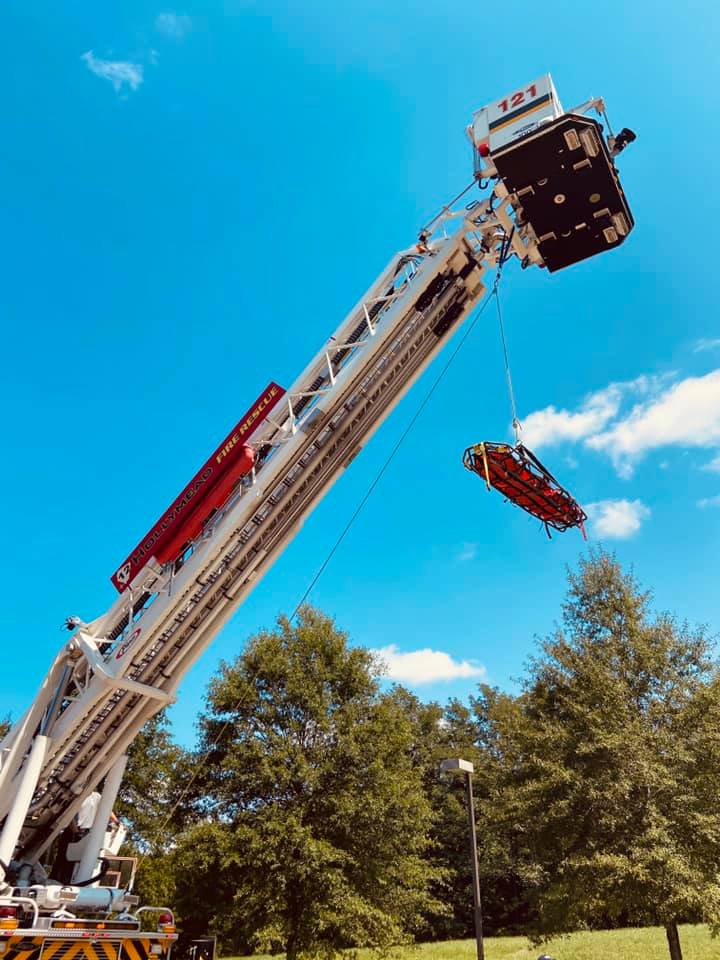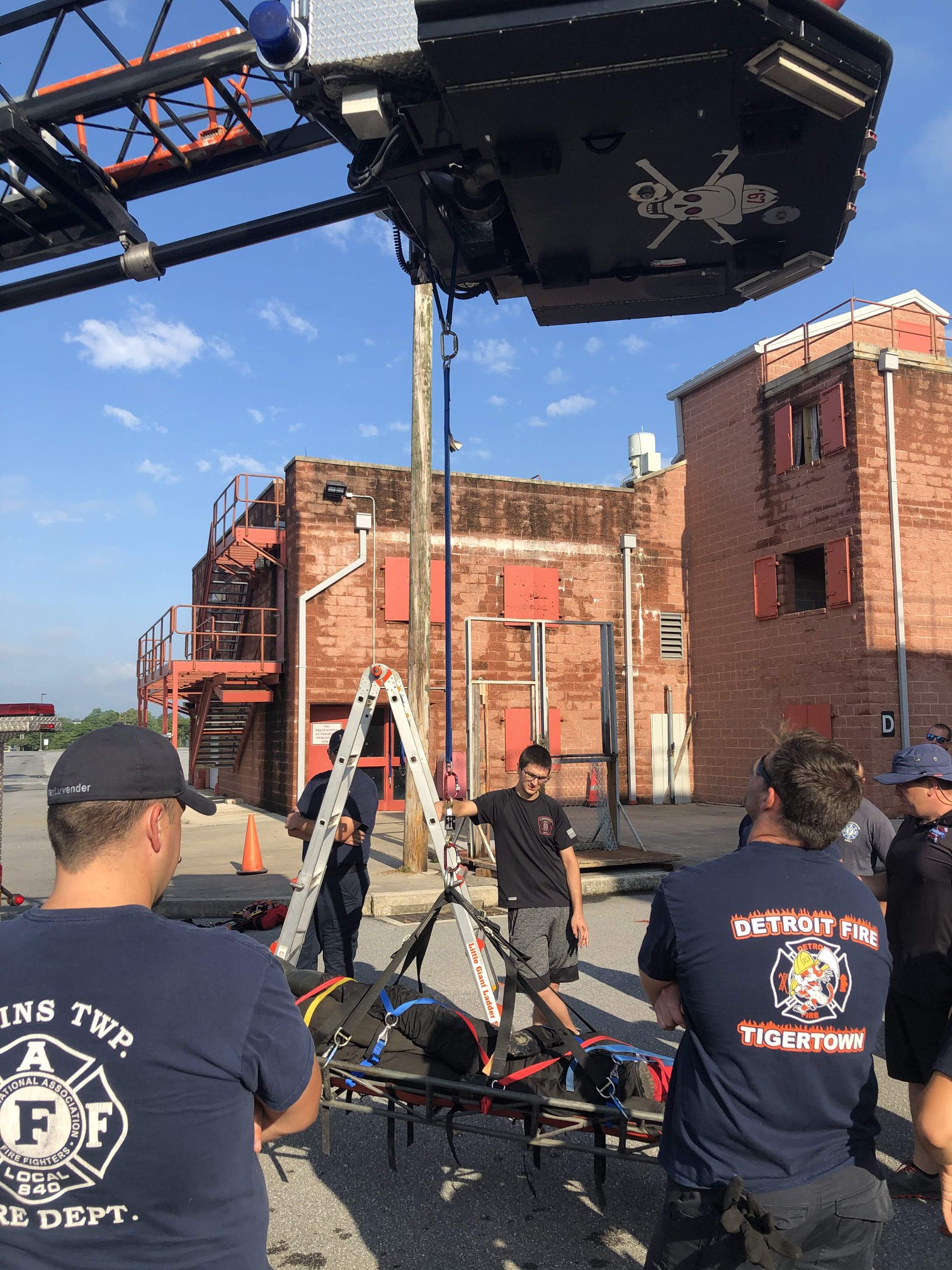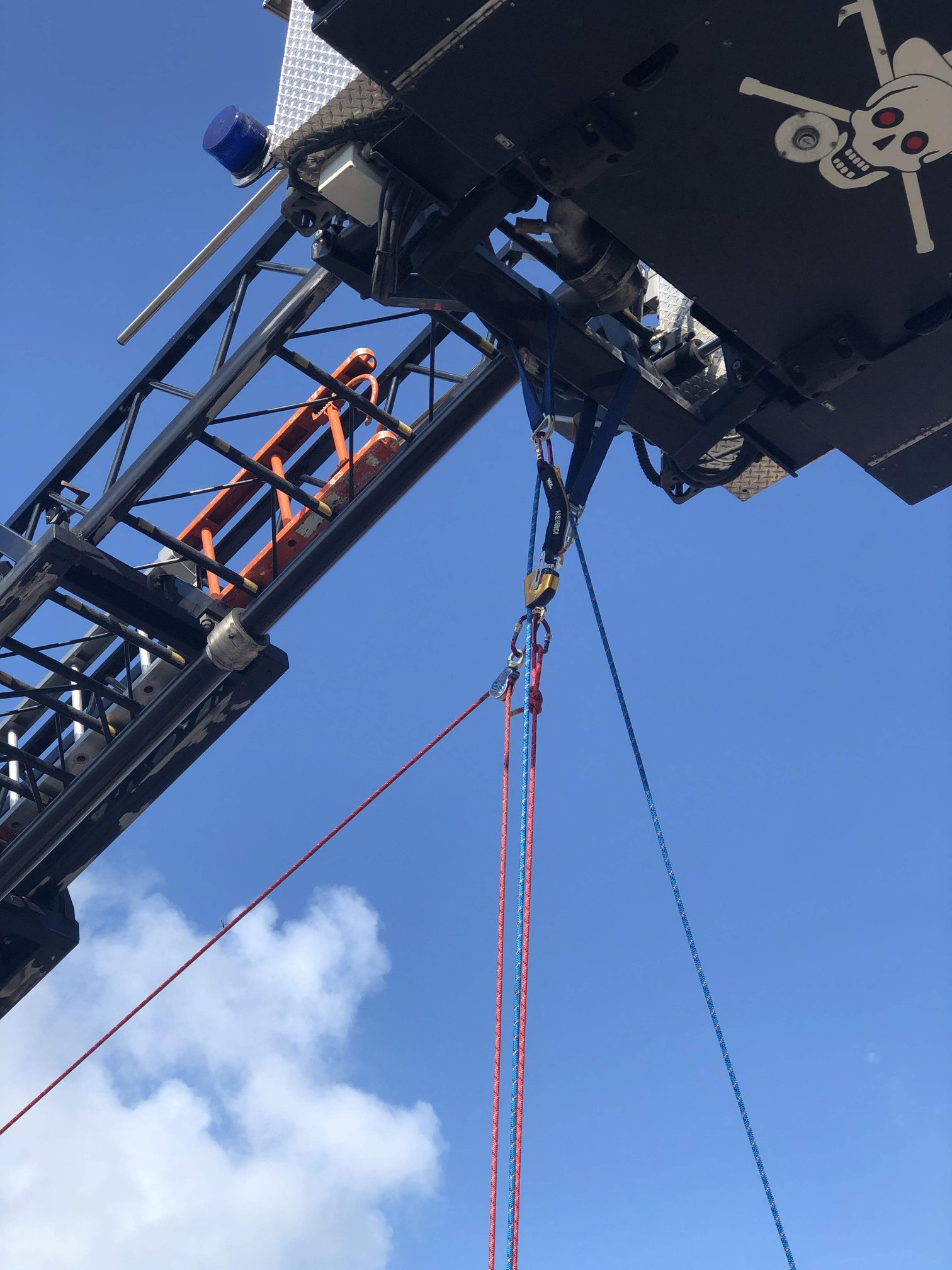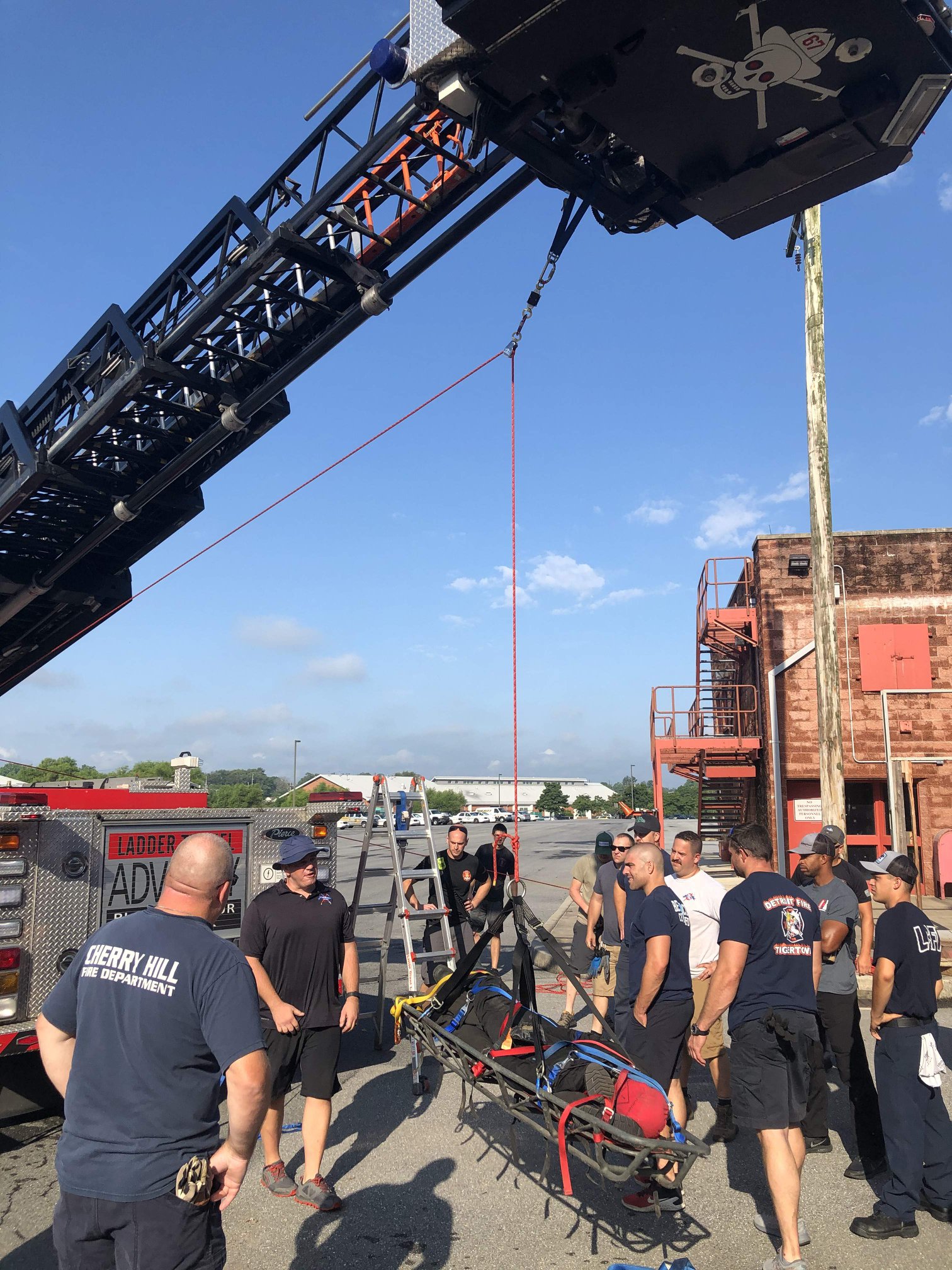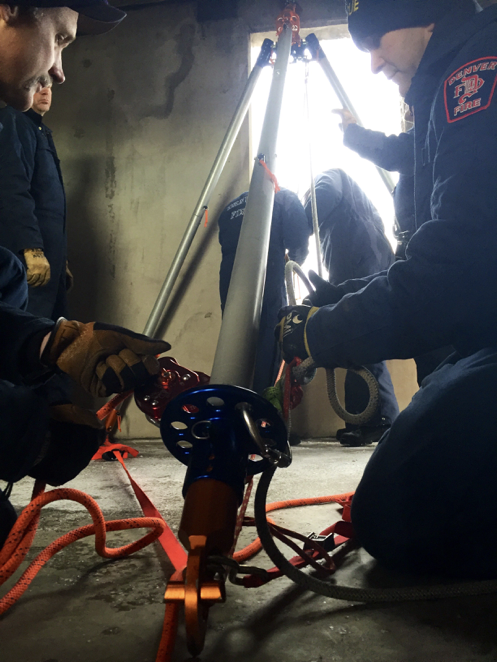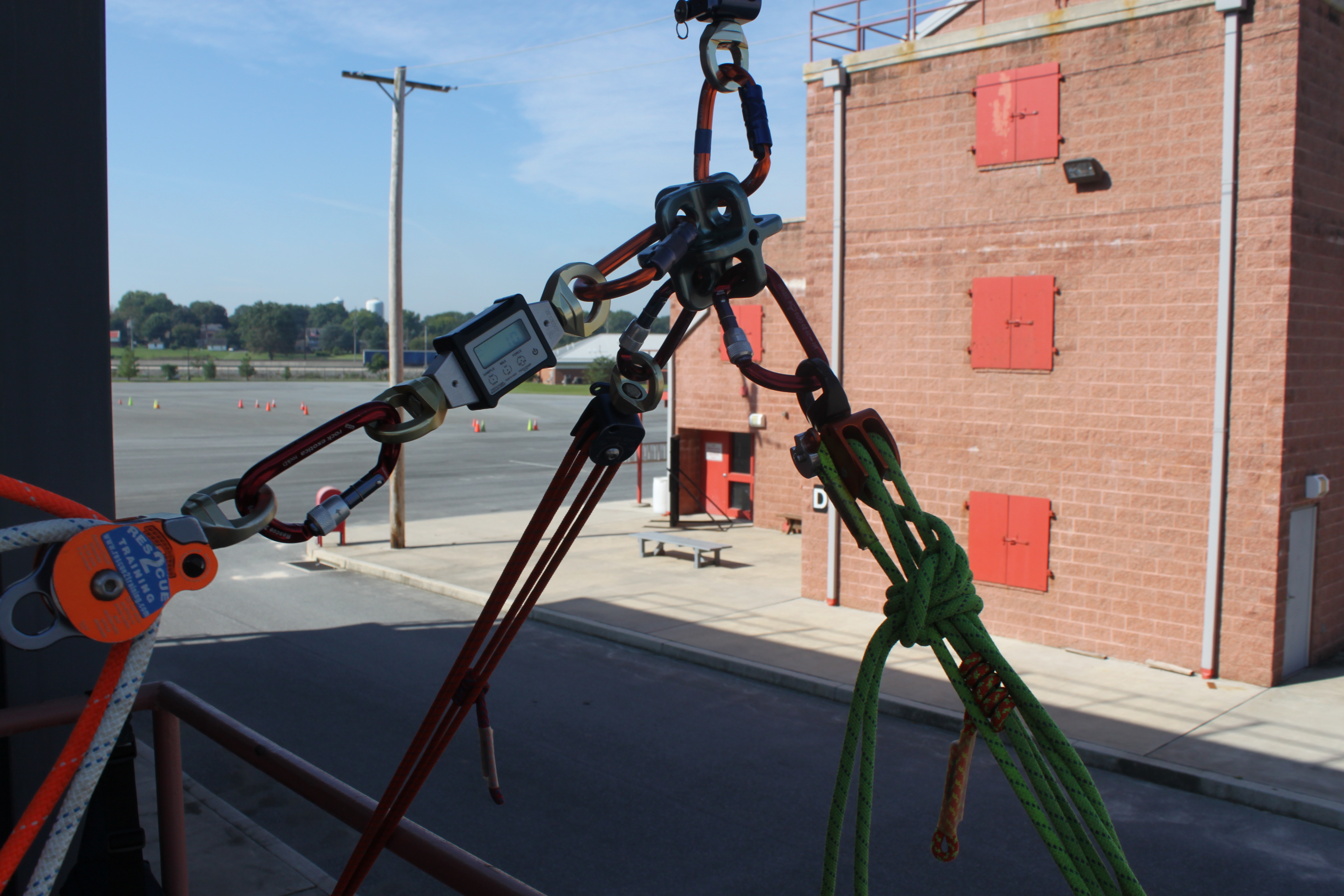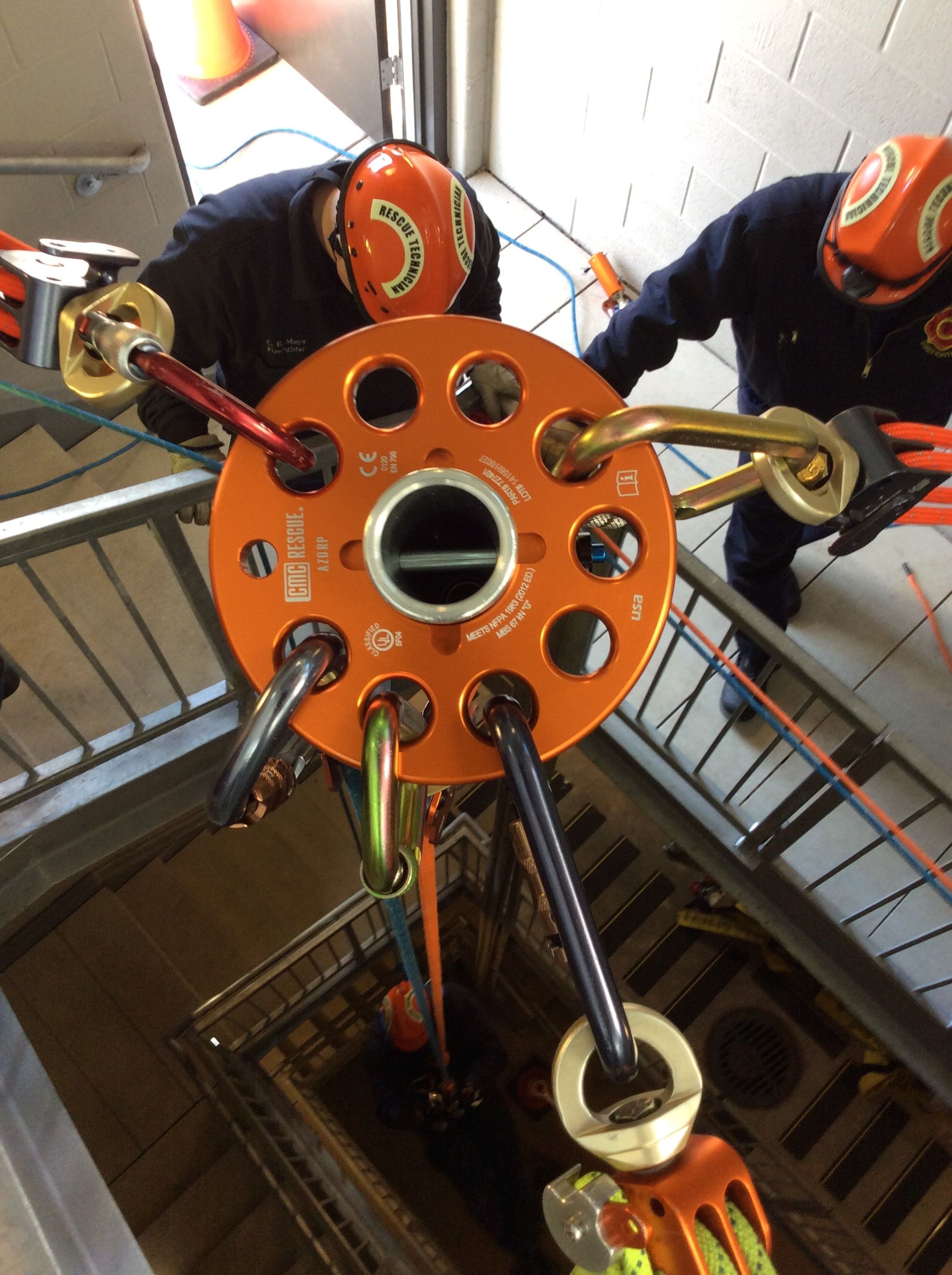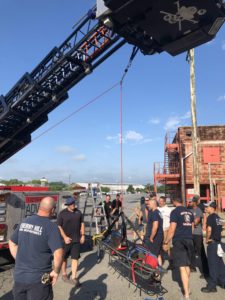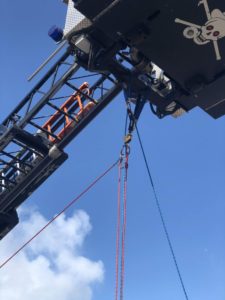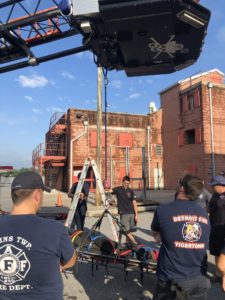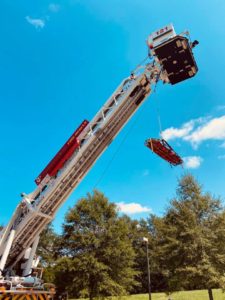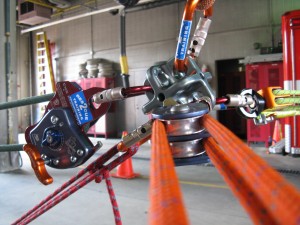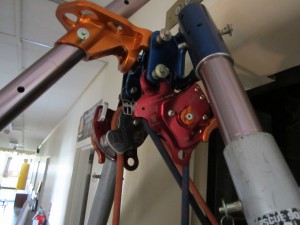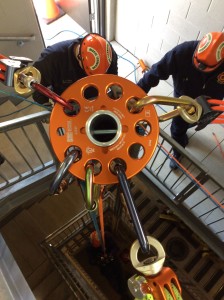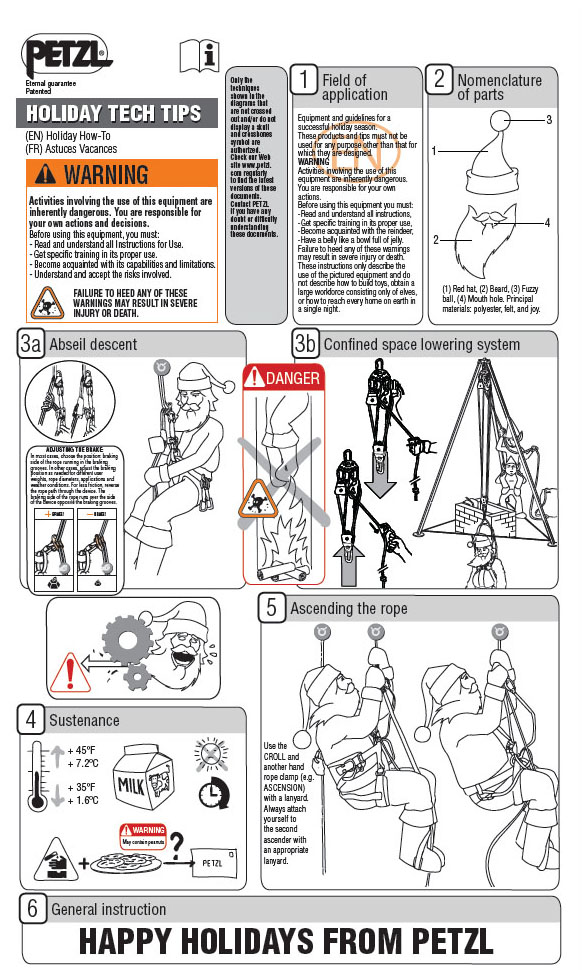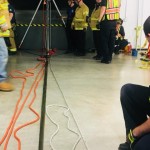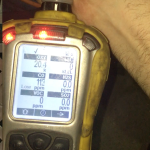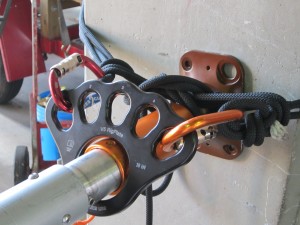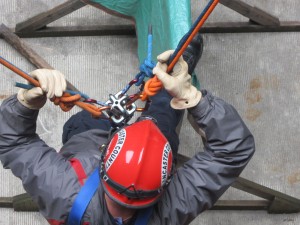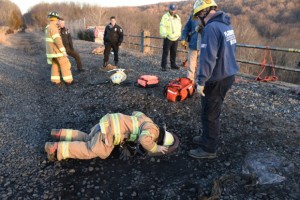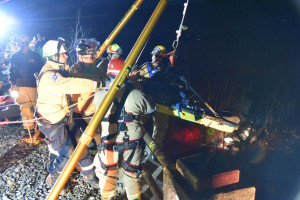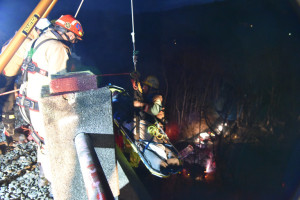While there is great debate about whether the mirrored Two Tensioned Rope System (TTRS) using CMC Rescue Multi-Purpose Devices (MPDs) should or shouldn’t be the way to go, one argument seems to be more popular than others regarding it: If one of the lines should fail and the person operating the second MPD fails to let go, the load will have a catastrophic fall. This is a simplified statement that I feel sums up the majority of what the argument seem to be about.
Mirrored system run off the head of an Appalachian Doortex:
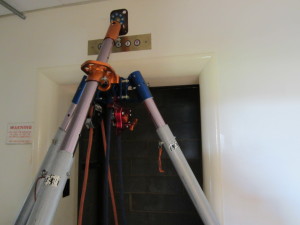
What I find most interesting with this argument is that we now want to account for a SECOND point of failure i our system. What if: one rope is cut, one anchor blows out, etc… AND what if the belayer doesn’t let go, doesn’t realize the first line is compromised, etc…
No other system rope rescue system is viewed in this perspective despite the fact that any belay system can be overridden by an inattentive belay operator. So if we want to assume a second point of failure, do we need a third rope? Of course not; we need a fourth in case the third one goes. I’m kidding, of course.
The arguments seem to hinge on whether or not failure one causes failure two and if the nebulous “human factors” can be accounted for. It’s an acceptable thought, but again, we don’t apply this anywhere else in our rigging process. Otherwise we would have tertiary anchors and ropes for every main anchor and change of direction. While human factors that can affect performance and safety are certainly worth looking at, I find it difficult to see how they can be applied equally to ALL systems.
What I think this segues into is a topic of the BCCTR BCDT (or more correctly ASTM F2436-05) criteria and whether or not it needs to be changed. The MPD meets the BCDT criteria. So does a T3WP and a 540. Both of these can be overridden when in use, but meet the BCDT criteria. How do we apply an equal rule about not letting go (human factor) of a device during a belay event? I don’t think there is one. By simply doing what ever you can to make a device fail while operating it during a belay test will only lead to a witch hunt against whatever device you don’t like.
The pessimist in me wants to do a presentation at ITRS entitled “They all Suck. A look at modern belay Devices” Now of course I don’t believe that, but I think this is the area that you will get to if you try and account for human factors in a test. As a fireman, I’ve seen lots of ways people have gotten themselves in trouble and I am positive that the rope world is not ready to account for human ignorance as part of a test method. I think the line has to be drawn somewhere. To quote the great author Douglas Adams: “A common mistake that people make when trying to design something completely foolproof is to underestimate the ingenuity of complete fools.” A better idea, and one already in NFPA 1006 (make of that what you will), is to have people pass a competency test to operate a belay system.
But do we really need another test? We’ve got the BCDT to determine if the device is capable. We’ve got the “whistle test” to test our rigging if everybody were to let go. These two tests can be equally applied to a traditional main and belay system as well as a TTRS. Is there a way to devise a test that can be equally applied to every system? If there isn’t, then maybe now is the time to figure it out. If not then I think the arguments, while not pointless, will probably not be solved. I can stand on one side of the argument and talk until I am blue in the face that the the TTRS with MPDs meets all of our current criteria and somebody else can stand on the other side and talk about what will happen when somebody doesn’t let go of the handle.
Here is a suggestion for one (expensive) way to solve this problem:
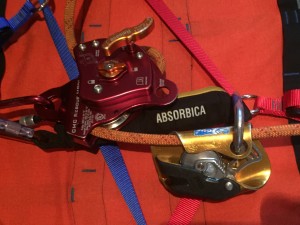
While the Petzl ASAP and L57 Absorbica are rated for two person loads for what Petzl calls “Accompanied Descent”, it is not shown in the instruction manual that you can attach it to the anchor to be used in the way shown in the picture above. I am extrapolating that it can be used that way. I have not tested this method yet, so I am only guessing as to its effectiveness. It is merely a possible solution to a problem that people have with an MPD based TTRS.
We get all off the benefits the TTRS has to offer as well as being protected from a runaway belay in the event of an inattentive operator.
Is an MPD based TTRS the be all, end all of rope rescue? Maybe, maybe not. But I do think it solves more problems than it causes. It also allows people who are required to perform rope rescue but don’t like it a safe way to operate, while at the same time allowing some unique options for the geek that a traditional slack belay system doesn’t allow.
